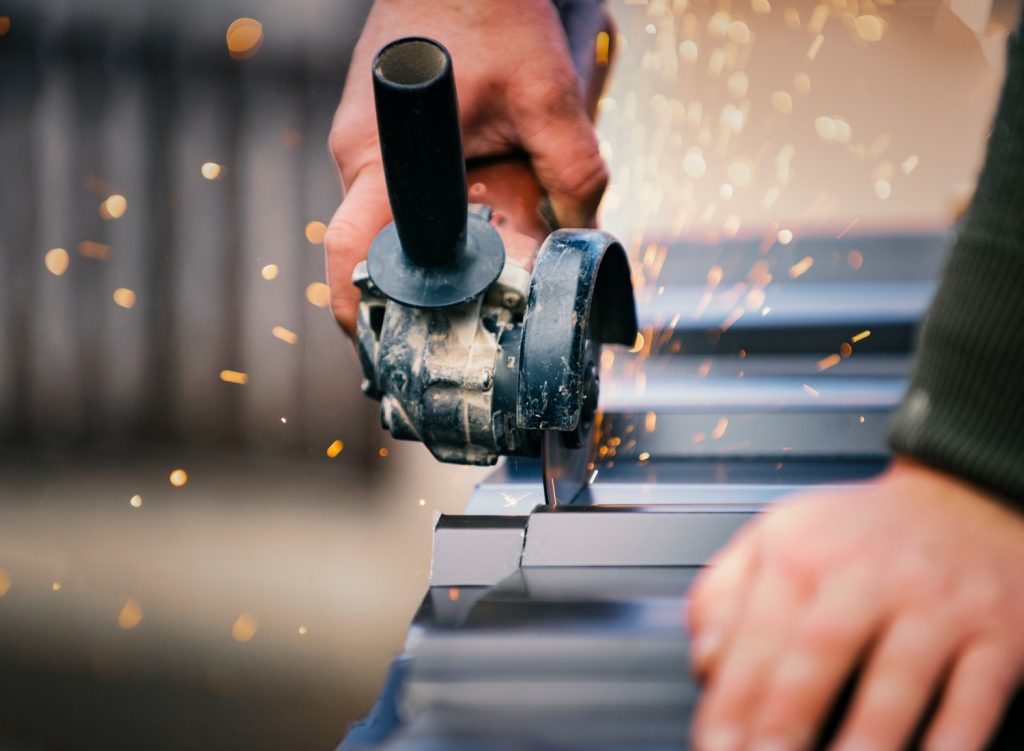How to Cut Metal: 5 Tools You Can Safely Use for Metalworking

Metalworking is a versatile and indispensable skill, whether you’re building structures, crafting artistic pieces, or tackling DIY projects. Central to any metalworking endeavor is the ability to cut metal safely and accurately. In this comprehensive guide, we’ll explore five essential tools that enable precise and secure metal cutting.
From traditional hand tools to advanced power equipment, we’ll cover the full spectrum of options available to meet your metalworking needs, all while emphasizing safety as a top priority. Whether you’re a seasoned metalworker or a novice eager to learn the ropes, these tools and techniques will empower you to achieve clean, precise cuts and elevate your metalworking capabilities.
Hacksaws
Hacksaws are a tried-and-true choice for cutting metal, offering a combination of precision and control when used correctly. These handheld tools come equipped with fine-toothed blades designed specifically for cutting through metal. To use a hacksaw effectively, it’s crucial to secure the metal firmly in a vise or clamp to prevent any movement during the cutting process. Start with a light, controlled stroke to establish a groove in the metal, and then gradually apply more pressure to cut through the material. It’s essential to exercise patience, as forcing the blade can lead to premature wear and inaccurate cuts.
When selecting a hacksaw blade, consider the type of metal you’re working with. Hacksaw blades come in various TPI (teeth per inch) options, with higher TPI blades suited for thinner metals and lower TPI for thicker materials. Regularly inspect and replace blades as they dull to maintain efficient and clean cutting. When working with thin metal, consider other tools like compact bandsaws as well for clean and precise cuts.
Angle Grinders
Angle grinders are versatile power tools that excel not only at cutting but also at grinding and polishing metal surfaces. Equipped with abrasive cutting discs, angle grinders offer speed and efficiency when it comes to cutting through various types of metal. When using an angle grinder for metal cutting, it’s essential to secure the workpiece in a stable position and mark the cutting line accurately.
Furthermore, always wear appropriate safety gear, including safety glasses, hearing protection, and gloves. Start the grinder and carefully guide it along the marked line, maintaining a steady hand and a firm grip on the tool. Keep the grinder at a slight angle to create a beveled edge. This can help prevent binding and produce cleaner cuts. It’s important to keep in mind that angle grinders generate sparks and debris, so it’s crucial to work in a well-ventilated area, away from flammable materials, and consider using a dust mask for added safety.
Plasma Cutters
Plasma cutters are powerful machines designed specifically for precision metal cutting, making them a staple in industrial and fabrication settings. These devices function by generating a high-velocity stream of ionized gas (plasma), which melts and blows away the metal, resulting in a clean, rapid cut. Plasma cutters are suitable for a wide range of metals, including steel, stainless steel, and aluminum.
To use a plasma cutter safely, it’s essential to wear appropriate personal protective equipment, such as a welding helmet with a shaded lens, gloves, and protective clothing. Set the cutter’s amperage and gas flow according to the material and thickness you’re cutting, then guide the cutter’s torch along the desired cutting path while maintaining a consistent distance from the metal surface. Practicing proper technique will yield precise, clean cuts and minimize the formation of slag or dross.
Circular Saws
Circular saws are often associated with woodworking but you can adapt them for metal cutting with the right blade. Metal-cutting circular saw blades feature carbide teeth or abrasive discs designed to slice through metal efficiently. When using a circular saw for metal cutting, it’s crucial to have a stable work surface and securely clamp the material to prevent any movement during the cutting process. Adjust the saw’s cutting depth to penetrate just enough to cut through the metal, reducing the risk of kickback.
To ensure safety, always wear appropriate gear such as safety glasses and hearing protection, as the cutting process can be noisy and generate sparks. Keep the saw steady and use a slow, controlled cutting motion to produce clean and accurate cuts. Additionally, inspect the blade regularly for sharpness and signs of wear.
Metal Shears
Metal shears are specially designed hand tools that can cut sheet metal and thin metal stock. They excel at providing precise, clean cuts with minimal distortion, making them an ideal choice for intricate metalwork. To use metal shears effectively, begin by marking the cutting line on the metal and then insert the material between the blades of the shears. Apply steady pressure by squeezing the handles together.
Allow the shears to cut through the metal along the marked line. The type of metal and its thickness may require different types of metal shears, such as aviation snips or compound leverage snips. Regularly inspect the blades for sharpness and signs of wear to ensure consistent cutting performance.
Conclusion
Learning how to cut metal safely and accurately is an invaluable skill for anyone involved in metalworking. Whether you opt for traditional hand tools like hacksaws and shears or choose power tools like angle grinders and plasma cutters, understanding proper techniques and safety precautions is essential. By mastering these tools and methods, you can achieve precise, clean cuts in metal, elevating your metalworking projects to successful and satisfying endeavors. Remember that safety should always be your top priority, and wearing the appropriate protective gear is essential for every metal-cutting task.
